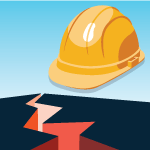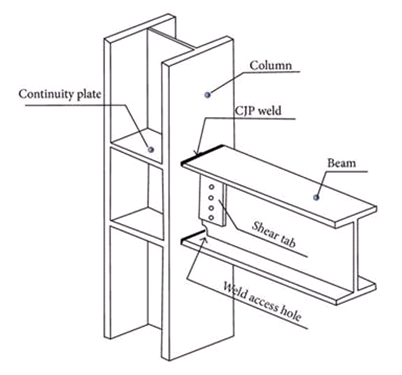
This is our second blog in a series providing some clarification on statements made earlier this year in articles published by The New York Times regarding the seismic hazard and safety concerns for tall buildings, particularly those in San Francisco. In this post we are concerned with the second article, “At Risk in a Big Quake: 39 of San Francisco’s Top High Rises.”
The article reported that “experts consider these pre-Northridge steel high-rises vulnerable to collapse only in extreme shaking caused by rare and powerful earthquakes, similar to the one that struck San Francisco in 1906.” While this statement is generally correct, the intent of the building codes to date has been to achieve life safety with a small probability of collapse. For older buildings with known defects, their probability of collapse is higher. However, since earthquake shaking is not uniform, and even under extreme earthquake shaking only a relatively small number of the buildings would experience more than the MCE level of shaking, the collapse probability over the affected area is not going to be uniform.

The article also highlighted major defects in welded steel moment-frame buildings constructed between 1960 and 1994. A typical pre-Northridge earthquake steel moment frame connection (Figure 1) included a bolted connection through shear tab between column and beam, and a long continuous weld between the beam and column flanges. The connections were designed to yield under strong shaking and to behave as plastic hinges to dissipate earthquake energy without loss of strength. This yielding without fracturing is intended to achieve the ductility requirement, which requires that building occupants be able to exit a badly damaged building without being exposed to the danger of the building’s collapse. However, several defects in this design were identified during the 1994 Northridge earthquake, including:
- High stress concentration at welded joints
- Flawed welding that was unable to achieve the intended design strength
- Poorly designed and under-sized bolts that were unable to withstand the forces after the failure of the welded section
These defects resulted in the unexpectedly early yielding and brittle fractures of these connections. While it was obvious that these connections did not perform as intended, the revelation of defects does not necessarily mean that the structures were not designed and constructed according to the standards that were in place at the time. According to the FEMA 350 report, the steel moment-frame buildings damaged by the Northridge earthquake met the basic intent of the building codes, but didn’t behave as anticipated.
In terms of damage pattern, most fractures were limited to the weld between the beam and column flanges with the bolted portion of the connection still intact. In some cases, a portion of the column flange was pulled out. In a few cases, the fracture progressed completely through the column flange and into the web, resulting in a situation that would likely result in collapse.
It was alarming to engineers and building owners that a building could withstand the earthquake without much cosmetic damage yet sustain significant structural damage to the moment frame connections. This suggests that the lateral and vertical force demand that was unloaded when the joints were fractured was quickly redistributed to other structural components without noticeable deformation of the building. This further suggests that these structures possessed some redundant capacity to withstand complete collapse, since these unexpected fractures caused little architectural or nonstructural damage during the Northridge earthquake.
Given these observations, it can be inferred that these steel moment-frame buildings are vulnerable to large economic damage, but a complete collapse of all buildings caused by a moderate earthquake is unlikely. According to the AIR Earthquake Model for the United States, the collapse probability caused by the HayWired Scenario would be less than 0.1% for steel moment-frame structures built prior to 1994, which is consistent with the recent USGS HayWired scenario (M7.0) study, which states that “collapse of such high-rise buildings appears to be unlikely in downtown Oakland and San Francisco in an earthquake like the HayWired mainshock.”
